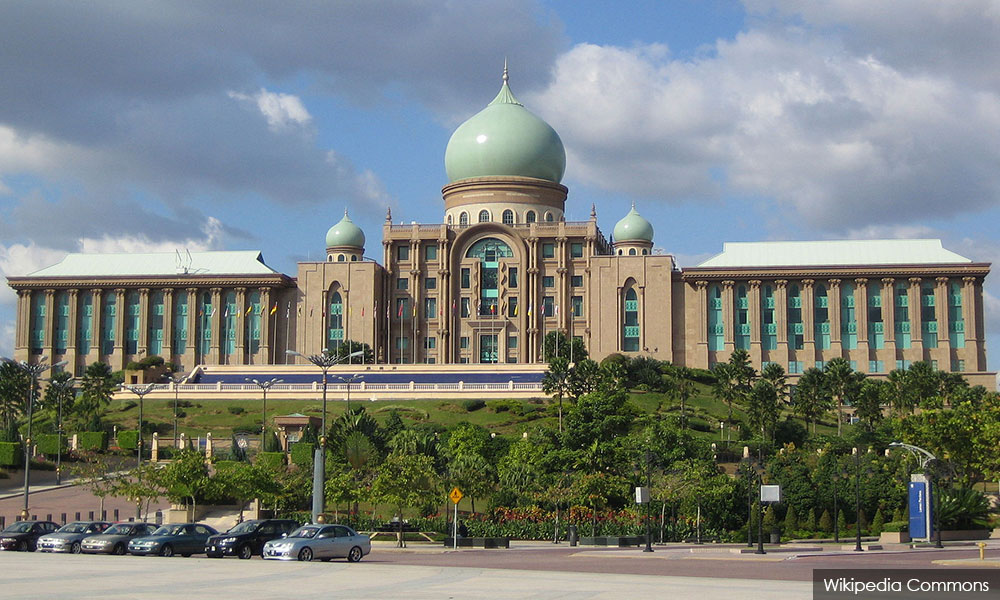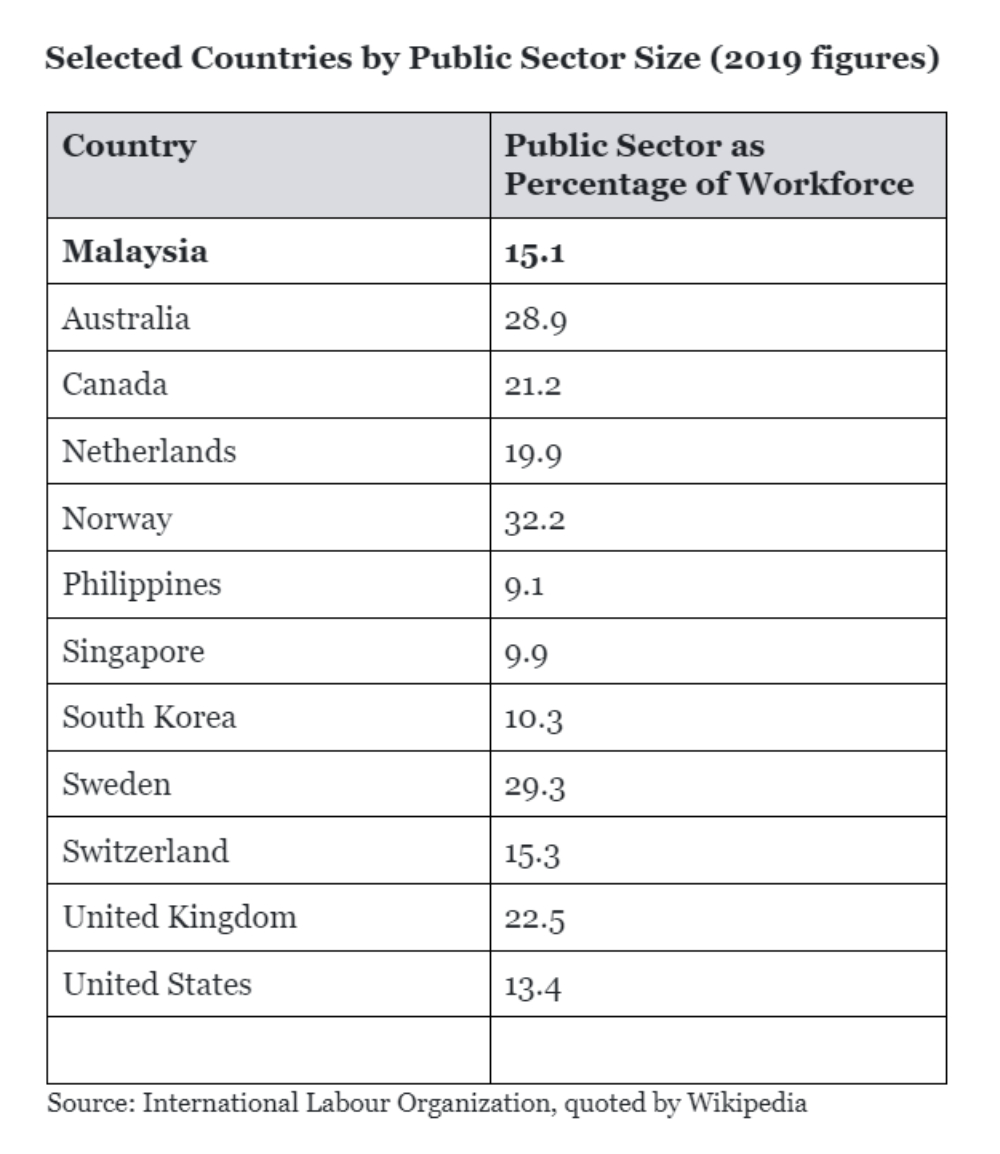There is a paucity of evidence to clearly show the civil service is bloated.
But by trying to compare like with like and excluding those who should not be included in Malaysia into the civil service, the answer to that question in the headline is drum roll… no!
The civil service, a public punching bag repeatedly beaten up as the epitome of bureaucratic inefficiency and a terrible waste of taxpayers’ money, is really not when you look at the available evidence.
“Experts” who say otherwise should know better.
In statements bordering on outright racism, many groups repeatedly allege that it is a means of providing employment to bumiputera, mainly Malays, buttressing repeated allegations that the administration perpetuates widespread inefficiency due to lack of meritocracy.
That’s hogwash as the figures cited in this article will show.

The argument can be easily put to rest by the government. It has the figures in terms of the composition of the civil service and what is excluded by other countries to show a much lower figure in terms of civil service to population against other countries.
The main reason for the high ratio of civil servants to the population is that the definition of public service is wide under the Federal Constitution.
Wide definition
Under Article 132 they include the armed forces, the judicial and legal service, the general public service of the Federation, the police force, joint public services, even the public service of each State and the education service.
As the Congress of Unions of Employees in the Public and Civil Services pointed out in 2017 (I could not find earlier figures) if you exclude four of these categories - the armed forces, police, education and health personnel - the number of civil servants in Malaysia drops to 500,000, from 1.6 million.
Extrapolating that to the figure of 1.7 million generally said to be the number of civil servants, then the adjusted comparable figure for civil servants should be just 530,000, miraculously reducing the number of public servants by about seven-tenths!
Let’s remember that education is pretty much free in government schools. Teachers alone number over 420,000 and probably closer to 500,000. Health services are free or rather cheap for all Malaysians.
That is the cost the government is paying, not to keep excessive staff, but to provide services. Add in perhaps a bit fewer than 200,000 for armed forces and police and perhaps 100,000 for health and the adjusted figures are entirely possible.
All over the world, countries categorise their civil service differently making comparisons impossible. I could not find any site which did the adjustments to make it comparable.
What I could find was a Wikipedia entry citing International Labour Organisation figures for public sector employees as a percentage of the workforce. This is a better representation as it strips off category anomalies.
Note that only four countries have lower figures than Malaysia’s 15.1 percent - the US, Philippines, Singapore and South Korea. Where countries have a high degree of social welfare, the figures tend to be higher because the public services will have to hire people to provide the services.

Instead of constantly focusing on the public service being bloated - it’s not - it’s better, as Economy Minister Rafizi Ramli said, to remember that some areas of the public services need more hires, not less - more doctors, teachers, engineers, professionals.
Far lower figures
The figures I have quoted are far less than say the one repeatedly quoted by human rights activist Kua Kia Soong without attribution as “one of the biggest in the world, with 1.7 million civil servants to a population of 32 million, a ratio of 4.5 percent compared with Singapore’s ratio of 1.5 percent civil servants to total population; Hong Kong’s 2.3 percent and Taiwan’s ratio of 2.3 percent.”
Unfortunately, this is a figure which has been picked up by Wikipedia, propagating the myth of a bloated civil service in Malaysia.
To put it in perspective, 1.7 million workers represent just about 10 percent of the workforce of an estimated 17 million by the World Bank for Malaysia.
Put another way, 90 percent of the workforce in Malaysia is employed by the private sector. The public sector is not a monster employer but takes on vital services provided by the private sector in other countries.
Importantly, it is very necessary to pay attention to worker pay and benefits, working conditions and the question of meritocracy in the private sector than in the government sector instead of using the race bandwagon at every opportunity to keep whacking the public sector employees needlessly.
Remember, in Malaysia, public sector employees provide basic healthcare, education and security in addition to a host of other services, including those provided by state and local council employees.
Now, let’s talk about what the private sector - the giant employer - should do for employees, starting with a higher minimum wage and moving up from there to reduce race and other discrimination. - Mkini
P GUNASEGARAM says that it’s a sad fact of life that economic arguments are so often skewed to self-interests rather than impartially to ensure the right thing is done.
The views expressed here are those of the author/contributor and do not necessarily represent the views of MMKtT.




No comments:
Post a Comment
Note: Only a member of this blog may post a comment.